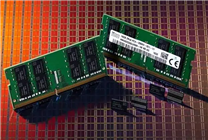Phison Electronics Reports Record Earnings Amidst Unprecedented Storage Market Demand
Summary:
- Phison Electronics achieves a record revenue of NT$18.137 billion in Q3 2025, driven by surging demand in the AI and storage markets.
- NAND flash memory prices are experiencing significant hikes, which could impact the industry landscape.
- Experts warn of a prolonged structural shortage in the global storage market due to expanding AI applications.
Phison Electronics has boldly navigated the demands of a rapidly evolving storage market, declaring a remarkable financial performance in its recent third-quarter report for 2025. The company’s revenue reached an impressive NT$18.137 billion (approximately 4.168 billion yuan), marking a quarter-on-quarter increase of 1.4% and setting a new all-time high. Gross profits also soared to NT$5.8 billion, reflecting unprecedented growth.
During an earnings conference call, CEO Pan Jiancheng articulated the unique nature of the current storage market landscape, driven primarily by AI-related needs. He characterized it as "unprecedented" in his career, emphasizing that such circumstances might only arise once in a lifetime.
Expanding Demand Propels Price Increases
The upward trend in NAND flash memory prices has been significant, with manufacturers raising prices by 50% to 75% recently. Notably, the cost of a 1Tb TLC flash memory unit surged from approximately US$4.8 in July to US$10.7 by early November. This pricing momentum is expected to enhance enterprise storage needs considerably in the fourth quarter.
On the client side, Phison’s main control chip shipments experienced a staggering 380% year-on-year increase and a 72% month-on-month surge. However, the company has acknowledged potential supply constraints due to tight production capacity at TSMC, particularly concerning its 6-nanometer process.
Pan Jiancheng noted that the current gross profit margin in the NAND flash memory sector stands between 50% and 60%. There is a strong desire to maintain rational pricing among upstream manufacturers to avoid strangling the industry ecology. While moderate price increases are deemed beneficial for expanding production capabilities, excessive margins could destabilize the overall market.
Industry Dynamics and Future Outlook
Recently, SanDisk startled the market by raising NAND flash contract prices by 50%, which reverberated across the industry. October saw Samsung Electronics halting DDR5 contract quotations, prompting swift reactions from rivals SK Hynix and Micron, and raising concerns over the DRAM supply chain. A sudden influx of urgent orders into the spot market led to a staggering 25% increase in DDR5 prices within just a week.
With the pace of artificial intelligence applications accelerating, industry experts have signaled that the global storage sector is grappling with a structural and severe long-term shortage. Gou Jiazhang, General Manager of Huirong Technology, stated that existing production capacities of major DRAM manufacturers such as SK Hynix, Samsung, and Micron are fully booked. He also highlighted that the actual supply-demand gap has widened, potentially doubling the initial projections of 70%-80%.
Despite some instances of repeated orders within the industry, the significant supply gap will likely impede resolution until 2026. Analysts project that a balanced market supply may not manifest until the latter half of 2027.
Conclusion
As Phison Electronics continues to thrive amidst this tumultuous market, businesses and consumers alike must prepare for the implications of rising memory prices and ongoing supply constraints. Companies involved in technology development and manufacturing should adapt to these trends, considering both immediate challenges and long-term strategies to remain competitive in a market shifted by the relentless growth of artificial intelligence.
By maintaining a keen eye on market dynamics and adjusting pricing strategies accordingly, stakeholders can better navigate the complexities that lie ahead in the evolving landscape of digital storage.





